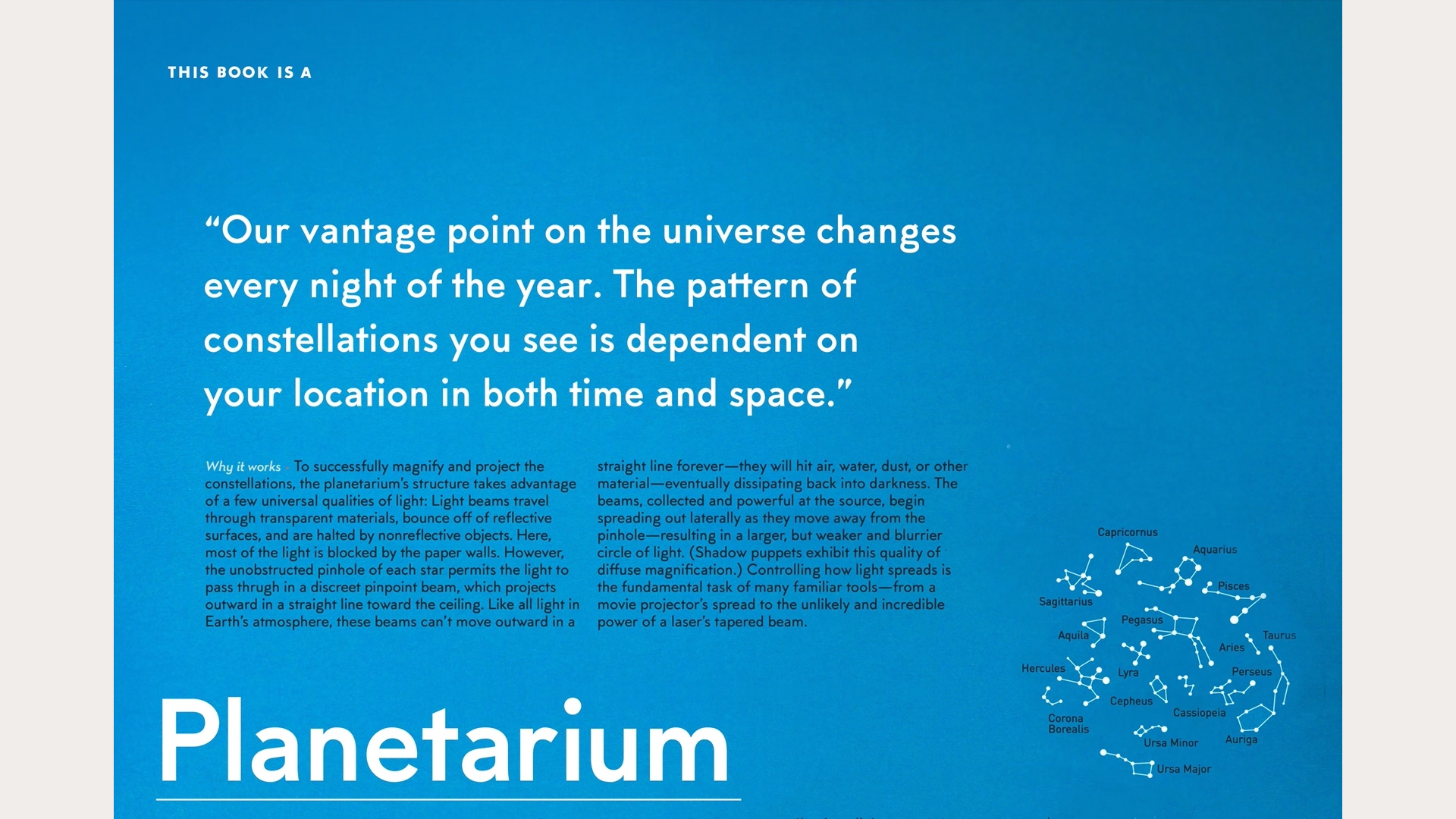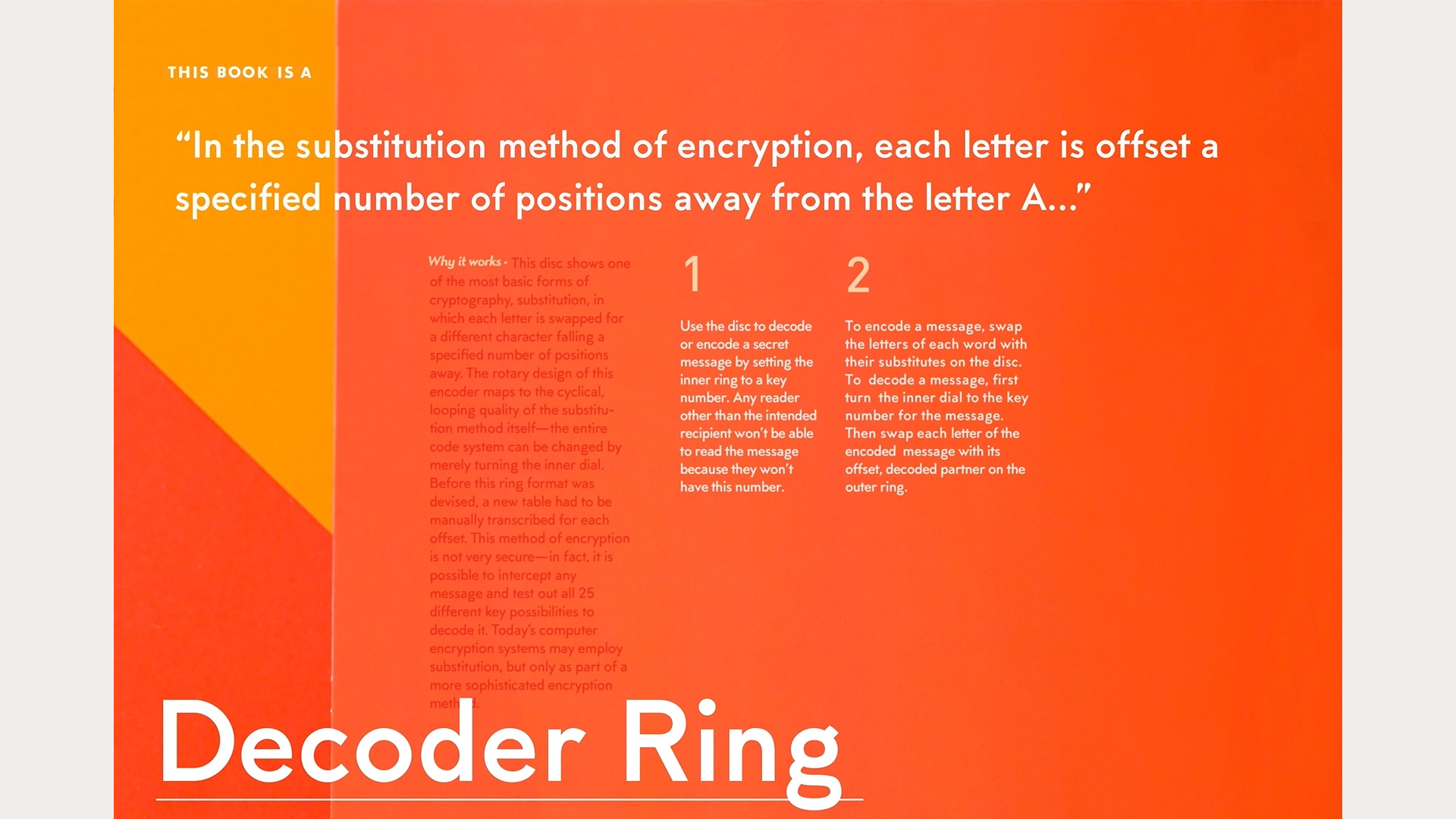This pop-up book is an interactive interface on the invisible wonders of the world. It seeks to acquaint a generation of kids who grew up on iPads with the deep magic and poetics of the physical. With it, they can touch time (through the perpetual calendar), perform encryption by hand (with the decoder), get curious about how vibration relates to pitch (with the instrument), observe that sound is a physical phenomenon (with the speaker), consider how math has the ability to draw (with the Spiralgraph), and—of course—ponder the cosmos on their bedroom ceiling (with the Planetarium).
Assuming that a new generation of readers (accustomed to the slick wish fulfillment of digital toys) would want to play with such lo-fi constructions was a big leap of faith. It was also one that pushed the bounds of possibility for trade publishing. However, the cultural experiment panned out: This Book Is a Planetarium is now in more than 100,000 homes and has been translated into two languages.










